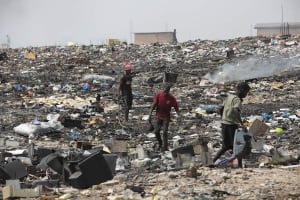In common parlance, when we talk about disposition, we’re generally talking about temperament. People and pets have dispositions we may or may not like. When it comes to electronic assets, we use the term disposition to talk about how organizations dispose of the assets they no longer want or need.
Sometimes disposition is the order of the day. An organization is upgrading a data center, for example, and no longer needs the equipment it was using. Sometimes disposition is a moving target – the organization could replace their laptops right now, wait until next quarter or wait a year. What criteria do they bring to bear in determining when is the best time?
There may be better times and ways to dispose of used technology. As to better ways, organizations need to pay attention to three critical criteria.
First, all organizations need to ensure that any data on their assets is completely destroyed and that they can prove it. Organizations are responsible for the data they handle and unless disposed of properly, disposed assets that contain data are a potential liability.
 Second, all organizations need to be responsible for environmentally sound disposition, and they need to be able to prove it. They need the chain-of-custody provided by a reputable firm. There’s ample news footage showing toxic sites full of discarded electronics, and if something is visibly showing its previous owner’s inventory tag or other identifying evidence, the previous owner’s brand will suffer.
Second, all organizations need to be responsible for environmentally sound disposition, and they need to be able to prove it. They need the chain-of-custody provided by a reputable firm. There’s ample news footage showing toxic sites full of discarded electronics, and if something is visibly showing its previous owner’s inventory tag or other identifying evidence, the previous owner’s brand will suffer.
From our perspective, there are degrees of environmental responsibility and we endorse choosing the most responsible route. To that end, we try finding a new life for the assets we receive and some 95% of the assets we handle find their way to such a new life. Extending the life of assets translates to avoiding Scope 3 emissions, but also empowers users around the globe that are otherwise priced-out of buying the latest and the greatest technology. Not everyone needs the latest features and can go a long way with serviceable used equipment.
For assets that truly have no viable remarketing value, we send them to our R2-certified downstream recyclers. The R2 standard incorporates the best practices in electronics repair and recycling and protects not only the environment, but also the workers who are handling assets that are potentially hazardous if not handled correctly. In addition, R2 also ensures that data is always destroyed on any asset being processed.
No asset we receive is ever thrown away.
Third, most organizations will want to capture as much of the residual value remaining in the assets as possible. When it comes to recovering the most value, understanding the potential markets for the used equipment is paramount. However, for most organizations focused on their core businesses, understanding the volatile secondary market for electronics is likely not in their scope.
Addressing these critical elements of sound asset disposition is illumynt’s core business. To help our customers realize the most value for their assets we use business intelligence and market data to optimize lifecycle decisions for the best possible outcomes. We want everyone to have a good disposition.
Be sure to read my continuing blog series as I discuss all things related to sustainable electronics.




